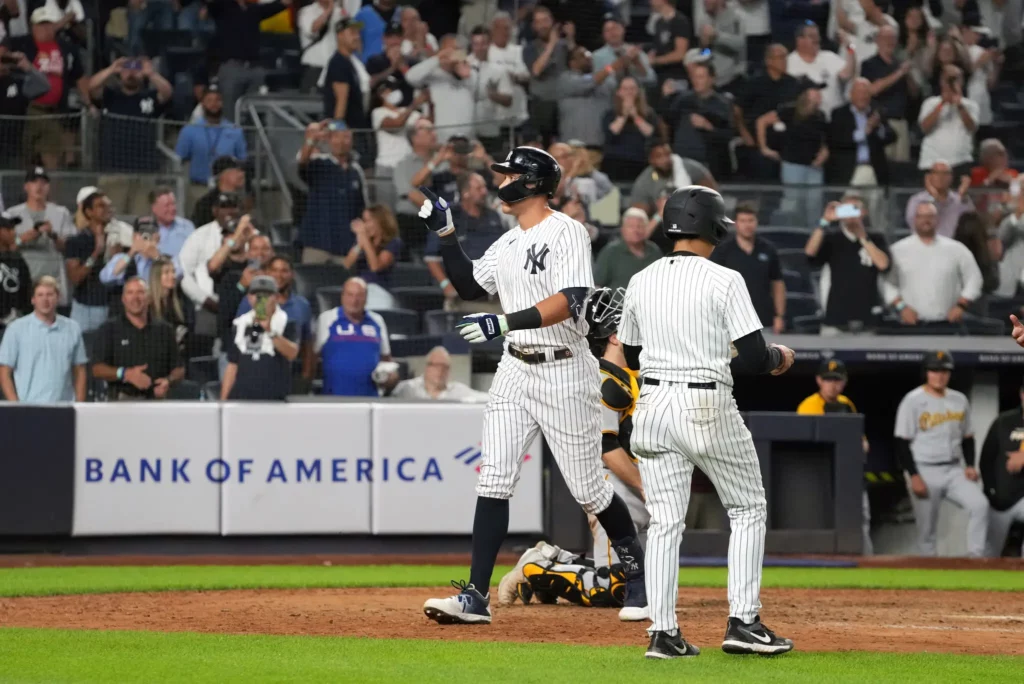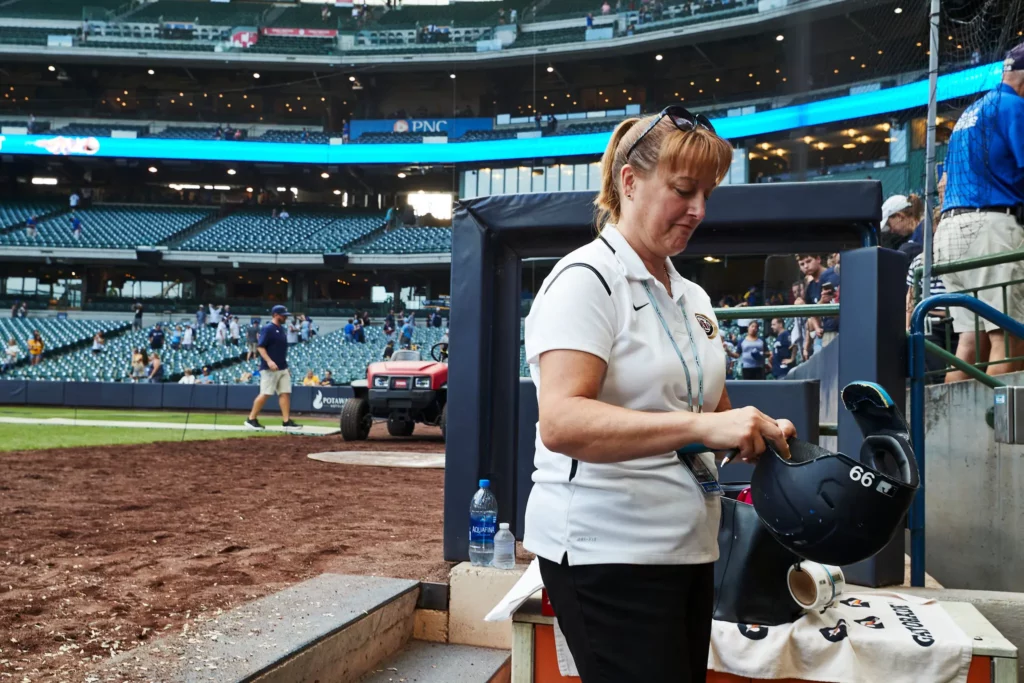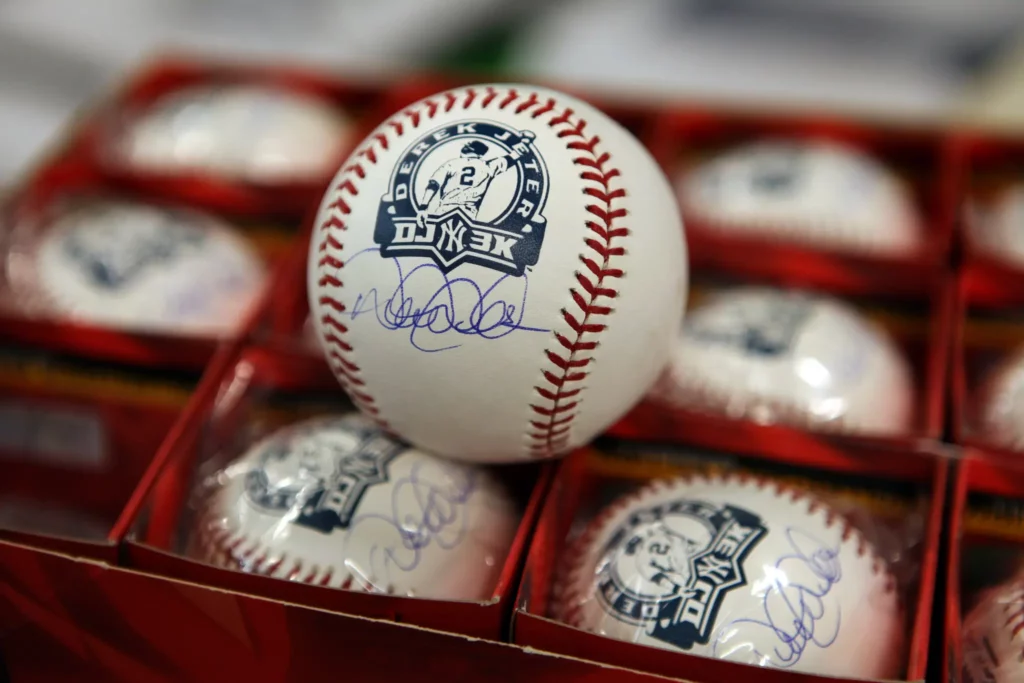The baseball that Aaron Judge sent screaming into the left-field bleachers at Yankee Stadium on Tuesday for his 60th home run of the season was different from his other 59 home run balls this year.
It was a special ball, prepared just for him, and the rest of the balls he swings at this year will be similarly distinct. They will not be juiced with extra bounce, nor will they have raised laces or anything else that could impact their flight patterns.
But they will be marked with something so secret, and so subtle, that Major League Baseball will not reveal exactly what it is.
It is all part of M.L.B.’s authentication program, an elaborate system designed to ensure that game memorabilia are verified as genuine, and it was first put into action for Judge in the ninth inning of the Yankees’ win on Sunday in Milwaukee, which was his first trip to the plate after he had reached 59 home runs.
From that point, all the balls that Judge swings at for the rest of the season, as he looks to pass Roger Maris’s Yankees and American League single-season record of 61, set in 1961, will contain two special markings.
One is a coded stencil visible to the naked eye. The other is a covert marking that requires special technology to see. The ball that was retrieved by a fan and given to Judge after the Yankees’ dramatic win Tuesday night against Pittsburgh, was examined and determined to be the right ball.

“It had the correct markings,” said Dean Pecorale, the authenticator for M.L.B. who put his stamp of approval on the ball and several other items that Judge asked to have authenticated.
The other authenticated items included his bat, spikes, batting gloves and jersey, all of which were taken to the office of Rob Cucuzza, the Yankees’ clubhouse manager, where Pecorale and another authenticator, Don Nesensohn, gave them their official blessing by affixing coded hologram stickers the size of a long fingernail on them.
Judge was reserved in his selection, choosing to have only a few items authenticated. That may change as he attempts to tie and then break Maris’s record.
“I would imagine the next one, they’re going to strip him down and take everything he’s got,” Pecorale said.
The same goes for Albert Pujols, the St. Louis Cardinals slugger who has 698 career home runs. As Pujols closes in on 700, M.L.B. officials have attached the same kind of covert marking to every ball that will be pitched to him for the rest of the season to ensure that no nefarious actors can falsely claim they have a milestone-setting ball.
“It allows us to verify some of the biggest moments in baseball history,” said Michael Posner, M.L.B.’s senior director for authentication and e-commerce. “How often does a player hit 700 home runs or set the American League home run record, passing the greats of Ruth and Maris?”
The basic program, in which former law enforcement officers witness game-used items as they come off the field and affix a coded hologram sticker to them, is not just for record-setting events. It is in operation at every major league game, and has been for two decades. It just cranks into overdrive when a major record or milestone is within reach.
In addition to the secret markings on the balls, M.L.B. has assigned an extra authenticator to shadow Judge and Pujols. Pecorale, a former New York City police officer whose first time authenticating at Yankee Stadium was in 2011 when Derek Jeter collected his 3,000th hit, had one assignment on Tuesday: Judge.
“There was a time when players didn’t really understand the program,” Pecorale said. “But most do now. Aaron definitely gets it. He comes and looks for us.”

M.L.B.’s authentication squad was established after a widespread racket of phony autographs and memorabilia was uncovered with the help of Tony Gwynn, a Hall of Fame outfielder for the San Diego Padres. Gwynn, who could spot a counterfeit autograph as quickly as a hanging slider, noticed in the late 1990s that some items purported to be signed by him were forgeries.
That led to an F.B.I. investigation, Operation Bullpen, which determined that roughly three-quarters of all autographs on the market were fake. The investigation resulted in dozens of convictions and prompted M.L.B. to begin its authentication unit so that teams and players could verify their memorabilia and in some cases turn them into a solid amount of cash — at least some of which is used to support charities.
In other cases, an authenticated item marking, say, a first career hit, a 20th win or a no-hitter could sit on a player’s mantel at home or in a glass case at the Baseball Hall of Fame.
“It has lent a greater degree of confidence that the artifact is what it is supposed to be,” said Josh Rawitch, the president of the National Baseball Hall of Fame and Museum in Cooperstown, N.Y. “Before the program existed, we used other methods. But the current system is the gold standard for authentication.”
Over time, the technology — especially the hologram stickers — has advanced to make the system virtually impregnable, said Posner, the head of the program. Game-used batting gloves, infield dirt, bases, broken bats, hats, gloves, jerseys and more have been authenticated — roughly a half-million items per year, from spring training through the World Series.
“W” flags and ivy from the outfield wall at Wrigley Field in Chicago have been authenticated, as have bottles of water from the fountains at Kauffman Stadium in Kansas City, Mo., and seats from decommissioned parks like Shea Stadium in Queens.
Vin Scully’s headphones and scorecard were authenticated after his last Dodgers radio broadcast in 2016. In 2007, a can of bug spray that was used to chase midges away from Yankees pitcher Joba Chamberlain during a playoff game in Cleveland was also given the seal of authentication.

“It sat on my desk for years,” Posner said, “but then it disappeared.”
If someone looks to sell that spray can today, it better have the special sticker as proof, or the F.B.I. might be called back into action.
The system relies on roughly 230 former law enforcement officers, hologram stickers and a chain of custody that might stand up to the most skeptical criminal court judge. Typically, two authenticators take up positions, one next to each dugout at every ballpark for every game. When a ball is taken out of play, it goes to an authenticator, like Billy Vanson, another retired New York City police officer, who worked Saturday’s Mets-Pirates game at Citi Field. Vanson spent most of his 25-year career at the 108th Precinct in Long Island City, Queens.
Now his precinct is a camera well next to the Mets’ dugout. The ball that comes out of play is tossed to Vanson, who applies a hologram sticker and records exactly when it was used before putting it in a bag.
“You watch the game in a completely different way as an authenticator,” Vanson said Saturday. “You have to pay very careful attention.”
When the stakes are lower than Judge’s home run binge, a ball taken out of play and authenticated in the third inning of a normal game can often be purchased at the team store by the seventh. Using information encoded on the hologram, a fan can identify the pitcher, the batter, the kind of pitches thrown and the velocity of each one.
During Saturday’s game, a fan paid $250 for second base. After the third inning, when the bases are routinely changed, an authenticator met the grounds crew by the tunnel and applied the sticker to the back of the used base. It was handed to a team official, who presented it to the fan in the stands. Before the game, Vanson authenticated Pete Alonso’s shin guard, at the Mets player’s request.



















Comments